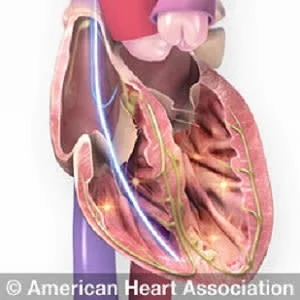A new analysis provides evidence on the safety and effectiveness of using wearable cardioverter defibrillators in children with ventricular heart rhythm disorders that put them at risk for sudden cardiac death. The findings are based on a review of clinical outcomes among all U.S. paediatric patients who wore wearable defibrillators between 2009 and 2016.
"Our results, which stem from the largest study to date among children in the United States using wearable cardioverter defibrillators, suggest that these external devices can help save the lives of children who are at the time, not good candidates for surgically implanted defibrillators because of their medical condition," said the study's principal investigator David Spar, MD, assistant professor of paediatrics at the University of Cincinnati and a paediatric electrophysiologist at Cincinnati Children's Hospital.
Surgically implanted cardioverter defibrillators are the main therapy for children at high-risk for sudden cardiac death due to heart rhythm disorders, known as arrhythmias, but invasive surgery or prolonged hospitalisation is required. However, many young patients are not good candidates for these surgically implanted devices because they need only a temporary "bridge" to help their heart. For example, if they are waiting for a heart transplant, are a newly diagnosed heart failure patient who is recovering cardiac function or if they have an infected implanted cardioverter defibrillator, they wouldn't be good candidates, Dr. Spar explained.
The new study, published in Circulation: Arrhythmia and Electrophysiology, an American Heart Association journal, indicates that wearable cardioverter defibrillators could be an effective alternative to surgically implanted devices in children to protect them from arrhythmias.
The U.S. Food and Drug Administration approved wearable cardioverter defibrillators for use in paediatric patients in 2015, but data about their safety and efficacy in children has remained limited. This knowledge gap has been particularly troublesome in how effective the device would be in younger patients in treating dangerous arrhythmias.
The newly published study is the first to describe appropriate therapy with a wearable cardioverter defibrillator in a paediatric population. Of the 455 patients (average age 15) included in the analysis, eight (1.8 percent) received at least one shock treatment to interrupt a dangerous heart rhythm. Six of the eight patients in whom the device discharged received appropriate therapy for the type of heart rhythm the device is designed to detect and stop.
In the two cases of inappropriate therapy, the device misfired when it misread a signal from the patient's heart. In all cases, the dangerous heart rhythm was successfully interrupted, normal heart rhythm restored and the patient survived, according to study authors.
Source: American Heart Association
Image Credit: American Heart Association
Latest Articles
arrhythmias, wearable defibrillators, paediatric patients
A new analysis provides evidence on the safety and effectiveness of using wearable cardioverter defibrillators in children with ventricular heart rhythm disorders that put them at risk for sudden cardiac death. The findings are based on a review of clinic








